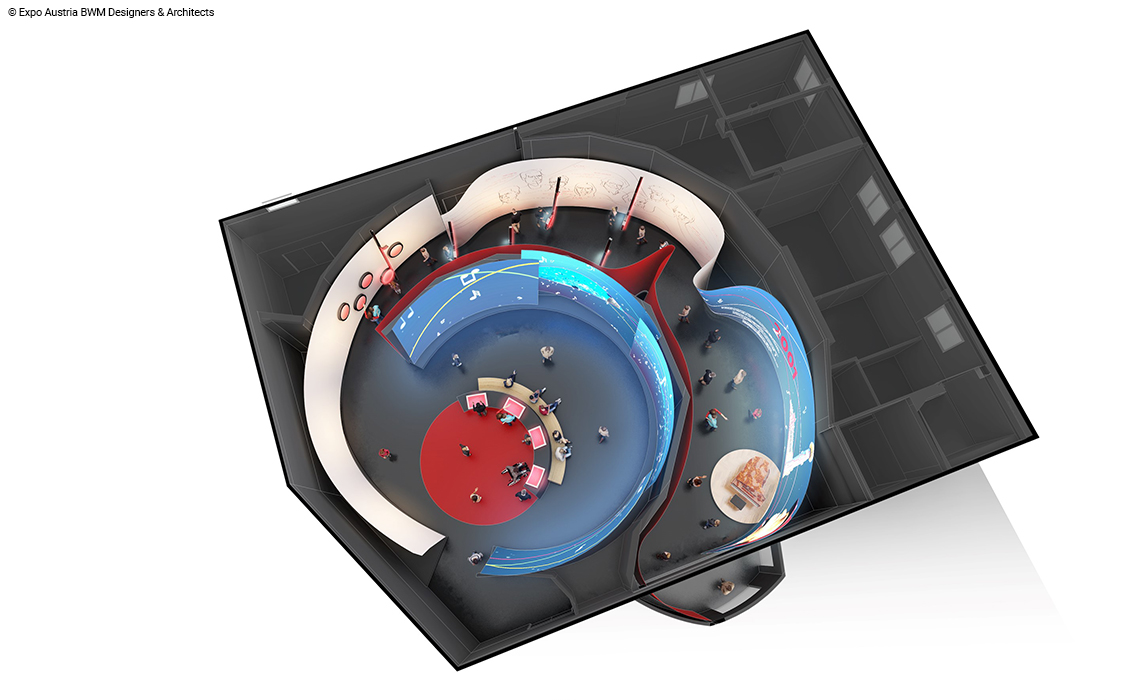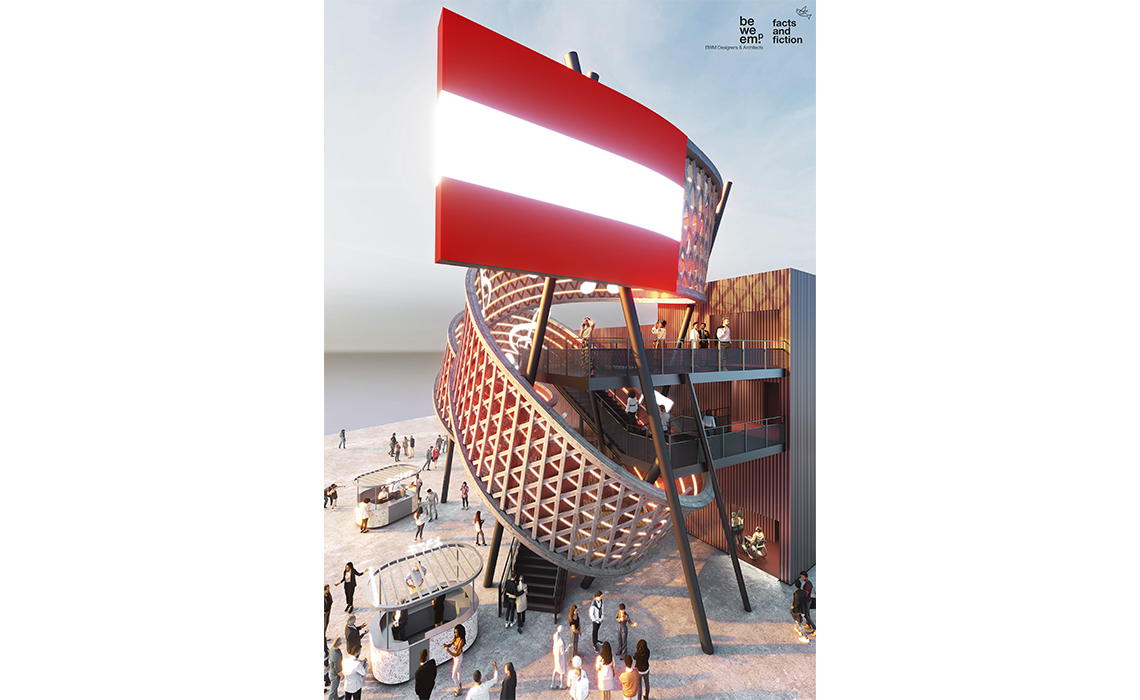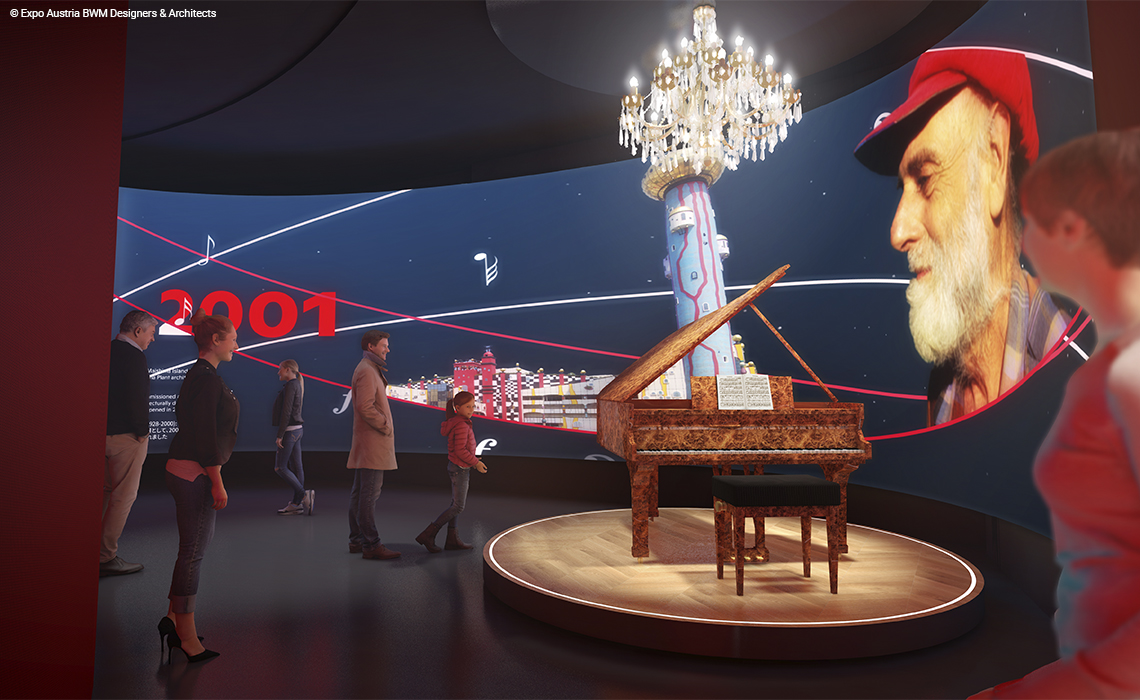
The Austrian pavilion at Expo 2025 in Osaka
The striking spiral characterises the external appearance of the Austrian pavilion at Expo 2025 in Osaka. As a central design element, it symbolises Austria's innovative strength in modern timber engineering and at the same time refers to the growing importance of wood as a climate-friendly building material. In times of global challenges due to climate change, the spiral emphasises the return to sustainable materials - combined with the highest level of technical sophistication.
Architectural masterpiece made of timber and steel
The dynamic shape of the spiral, 91 metres long and 4.3 metres high, is based on a supporting structure consisting of upper and lower chords, which are woven into a stable unit via 265 diagonal connections. The double-looped structure is supported by five steel pylons. The design plays with contrasts: visible construction details in wood on the outside, an artistic staging with music on the inside - the stylised score of Beethoven's ‘Ode to Joy’ runs through the interior of the spiral. The architectural design of the Austria Pavilion and the general theme were created by BWM Designers & Architects. facts and fiction is responsible for the concept and design of the exhibition in collaboration with BWM.
The dynamic shape of the spiral, 91 metres long and 4.3 metres high, is based on a supporting structure consisting of upper and lower chords, which are woven into a stable unit via 265 diagonal connections. The double-looped structure is supported by five steel pylons. The design plays with contrasts: visible construction details in wood on the outside, an artistic staging with music on the inside - the stylised score of Beethoven's ‘Ode to Joy’ runs through the interior of the spiral. The architectural design of the Austria Pavilion and the general theme were created by BWM Designers & Architects. facts and fiction is responsible for the concept and design of the exhibition in collaboration with BWM.

Manufactured in Austria, assembled in Japan
The sculpture was precisely handcrafted at Graf Holztechnik in Horn (Lower Austria) using RAPID® screws from Schmid Schrauben Hainfeld.
The spiral consistently favours sustainability: screwed lamellas made from PEFC-certified spruce wood from Austria were used. The construction does not require glue and can therefore be completely dismantled and reused. This principle of ‘reversible construction’ creates the basis for resource-saving utilisation beyond the Expo.
The finished segments were shipped in ten containers and assembled on site by a Japanese partner company with millimetre precision under the guidance of experts from Graf Holztechnik - a successful example of international cooperation and global expertise in timber construction.
The sculpture was precisely handcrafted at Graf Holztechnik in Horn (Lower Austria) using RAPID® screws from Schmid Schrauben Hainfeld.
The spiral consistently favours sustainability: screwed lamellas made from PEFC-certified spruce wood from Austria were used. The construction does not require glue and can therefore be completely dismantled and reused. This principle of ‘reversible construction’ creates the basis for resource-saving utilisation beyond the Expo.
The finished segments were shipped in ten containers and assembled on site by a Japanese partner company with millimetre precision under the guidance of experts from Graf Holztechnik - a successful example of international cooperation and global expertise in timber construction.




